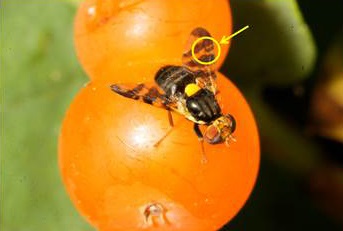Detecting European cherry fruit fly
Learn how to identify the European cherry fruit fly.
The Canadian Food Inspection Agency (CFIA) has confirmed the detection of European cherry fruit fly (ECFF), Rhagoletis cerasi, at an urban park in Mississauga, Ontario. The ECFF is considered a regulated pest to Canada and the United States, which means it is subject to official control including quarantine. These finds represent the first detection in North America. We do not know if ECFF is causing damage in commercial cherry orchards in Ontario. The CFIA is carrying out additional surveillance to delimit the distribution of this pest. We will have additional information on potential action once the results of the survey are known.
The main hosts include the fruit of commercial sweet and tart cherry, as well as uncultivated wild hosts black and mahaleb cherry, and honeysuckle. The ECFF has a biology and lifecycle that is very similar to our native cherry fruit flies (except ECFF is active earlier and will attack green and yellow fruit), and so control measures that are already in place would likely manage risk in commercial cherries. The damage caused by European cherry fruit fly is very similar to that caused by other cherry fruit fly species and the insecticides registered in cherries for "cherry fruit fly" will provide control of this new pest if it is present in Ontario cherry orchards. If you have more than usual injury from cherry fruit fly (of any kind) please contact Wendy McFadden-Smith at wendy.mcfadden-smith@ontario.ca.

